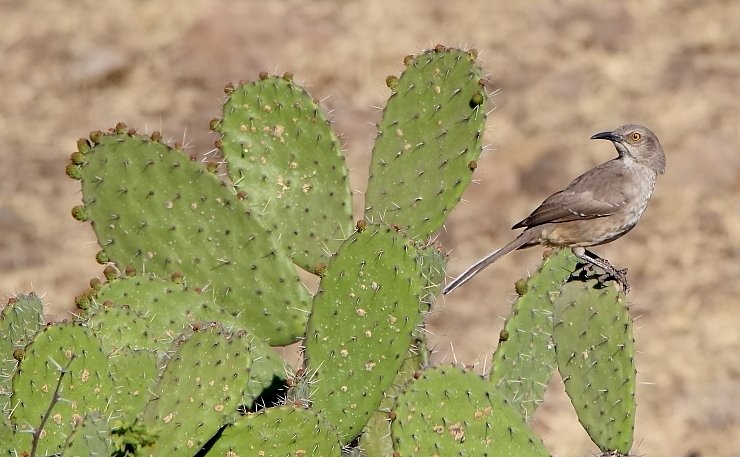
The reason that La Mesa is my new favorite local birding destination is not just that it is so close to home; it is the great mix of habitats that it offers. After walking three miles beyond the little town, I find myself in mature pine woods. On the way, I pass through a wonderful mixed habitat with lots of native trees that keep fruit-eating birds happy, and flowers that attract all of our region’s hummingbird species. But often, the best part of my day happens before I reach the town, in the thorn forest surrounding a small reservoir.
When I say “thorn forest”, I really mean it. When I visited it last week, it was the first time I had been there in early-morning weather that was warm enough to leave my old leather birding-jacket in the car. I almost went back for it when I realized how hard it was to make my way through the spiny acacias, huizaches, and prickly pears that grow unusually close together in this valley. In a thorn forest, as in some other situations, protection can be vital.
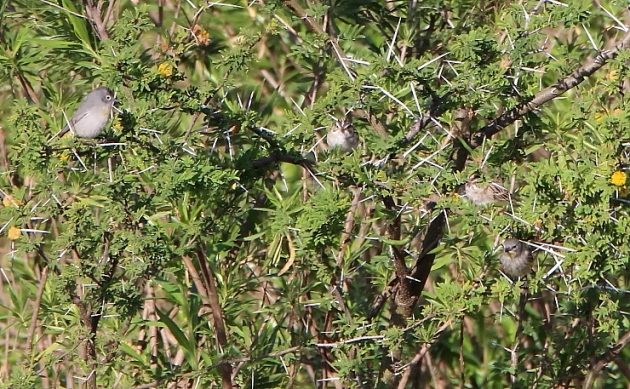
But, the birds! Protection, for birds, can be a very different thing than it is for us. We humans need protection from thorns, while for birds, thorns often provide protection. Which may be why the photo here shows two Clay-colored Sparrows, one Yellow-rumped Warbler, and one lovely Virginia’s Warbler, all hiding among many vicious huizache thorns.
This particular thorny habitat seems to be especially beloved by sparrows, both migratory and resident:
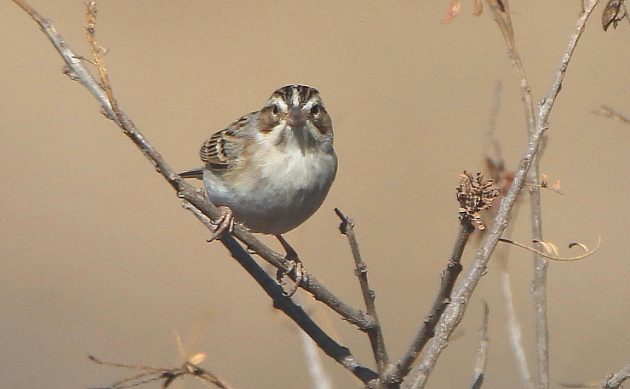
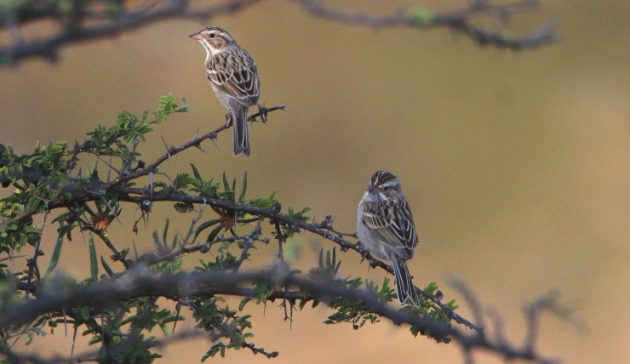
There were Clay-colored Sparrows by the dozen.
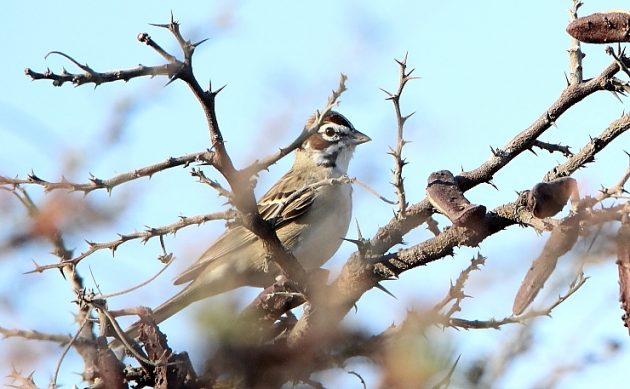
And a similar number of Lark Sparrows, although they were more timid about having their picture taken.
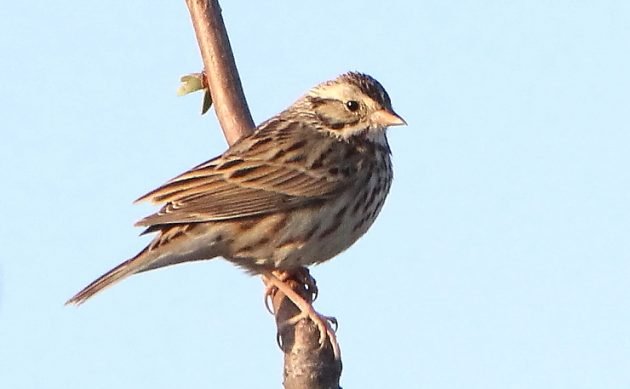
There were a few Savannah Sparrows…
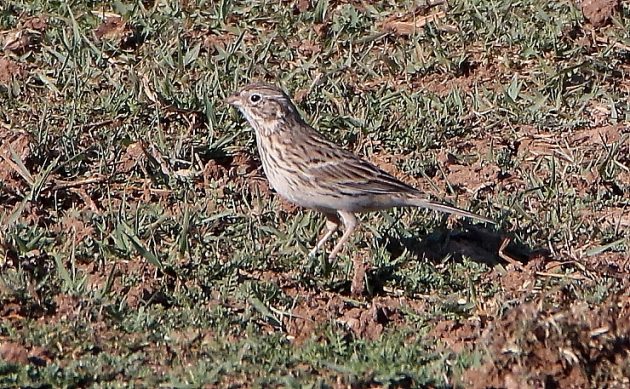
And a single ground-loving Vesper Sparrow I managed to pick out of the crowd.
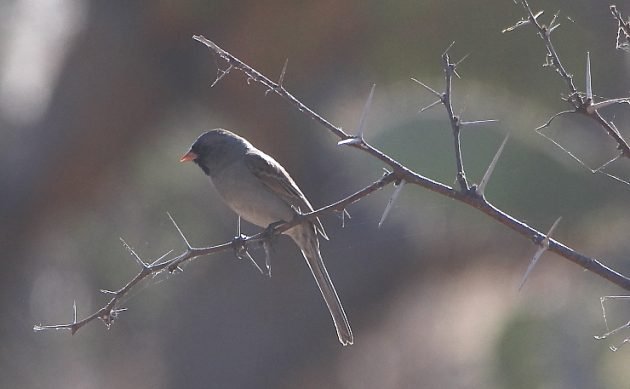
But my personal favorite is the hard-to-find Black-chinned Sparrow, a specialty of this site. This visit, I saw two.
Of course, the sparrows can’t have the thorn forest entirely to themselves. For example, they have to share it with the Curve-billed Thrasher up at the top of this post.
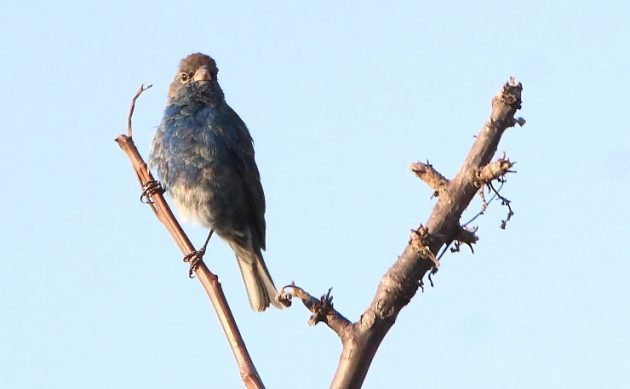
There were lots of Indigo Buntings, as well as many Varied Buntings and at least one male Lazuli Bunting.
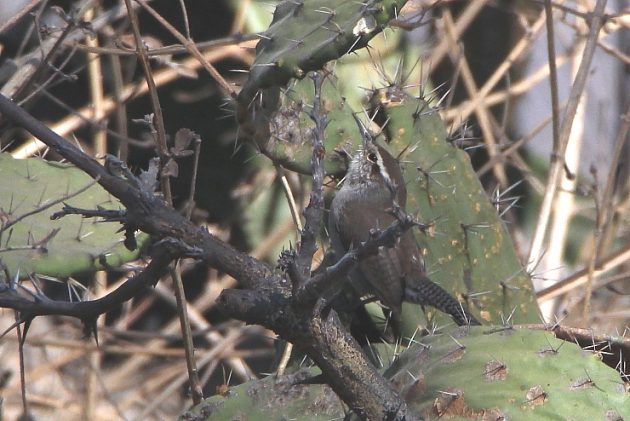
This Bewick’s Wren really like to get down among the thorns.
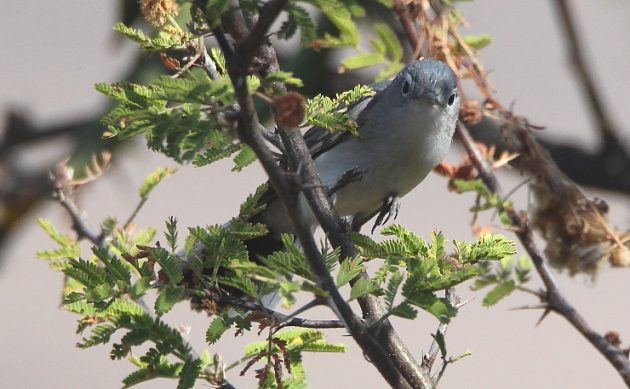
As does this intimidating Blue-gray Gnatcatcher.
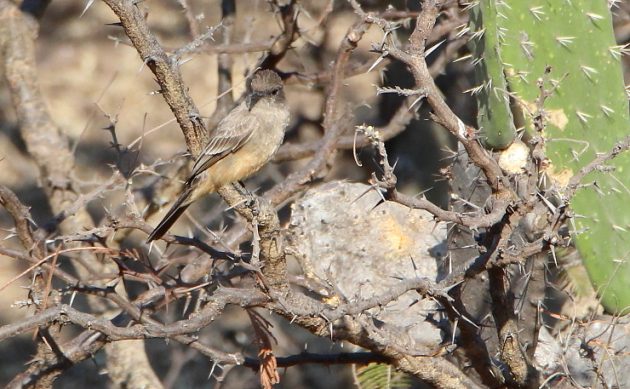
I was delighted to see at least two Say’s Phoebes here. I had only seen this species at one other site in Michoacán, and that site is too far away for casual visits. La Mesa is only 12 km (8 miles) from my home.
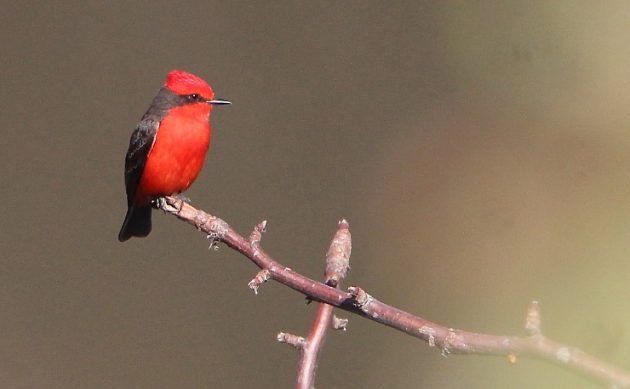
The Vermilion Flycatcher may seem like a more special species than the Say’s Phoebe. But, believe me, when you live in Michoacán, it isn’t. They are as common as dirt down here.
Speaking of thorns, where there are prickly-pear flowers, there will be hummingbirds. So I will leave you with a Violet-crowned Hummingbird and a pair of Broad-billed Hummingbirds.
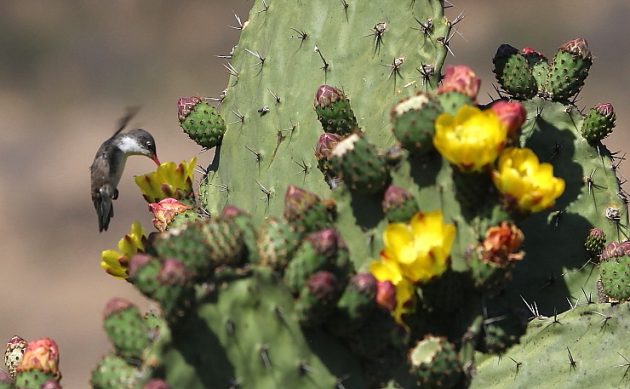
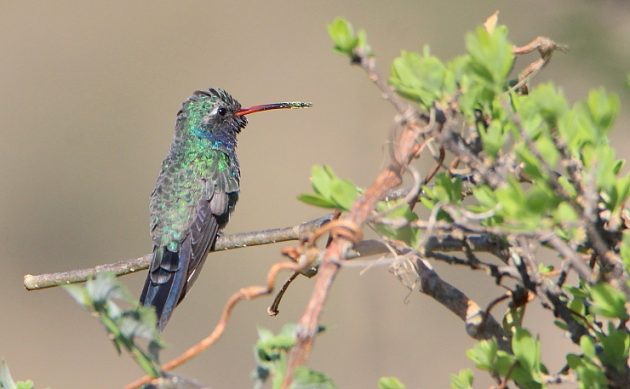
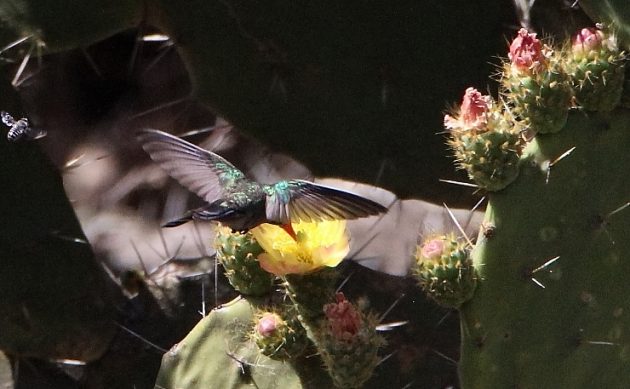











Leave a Comment